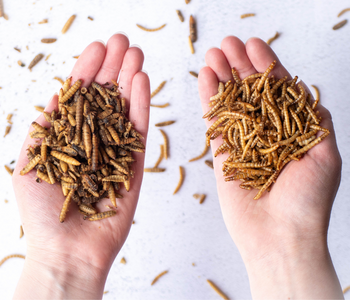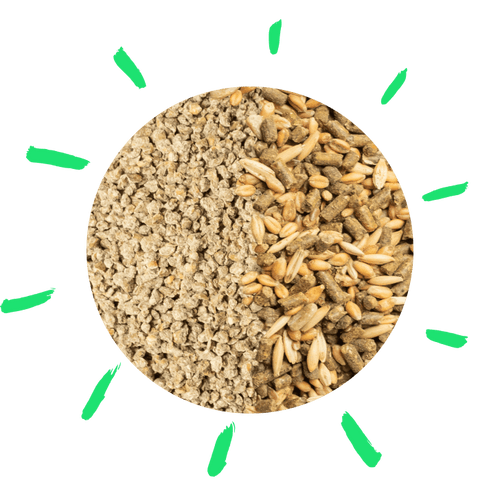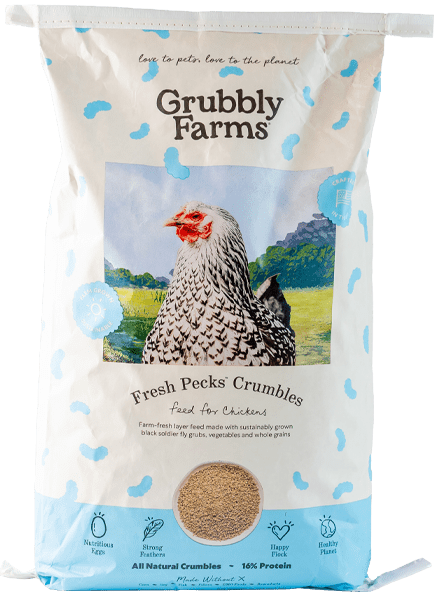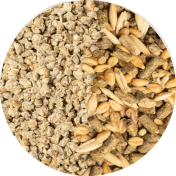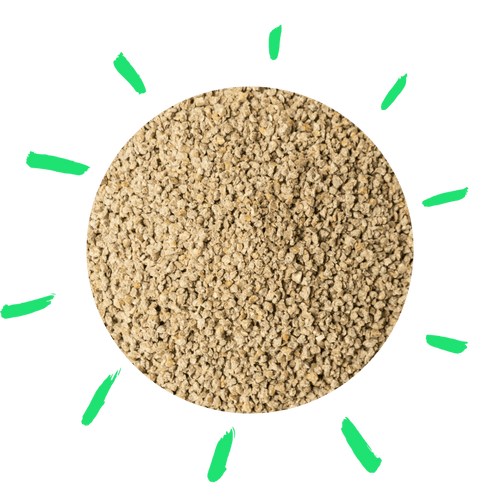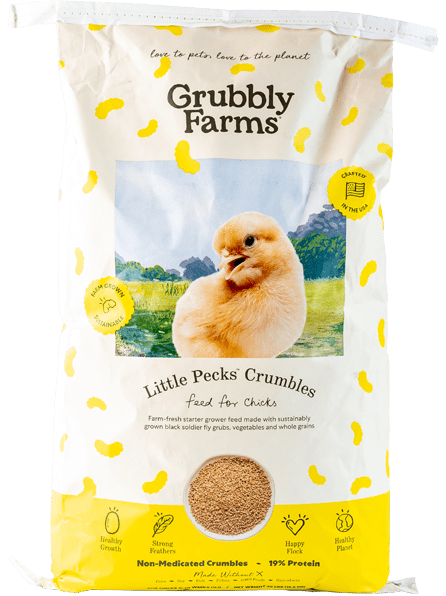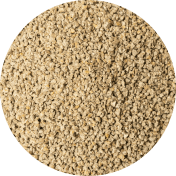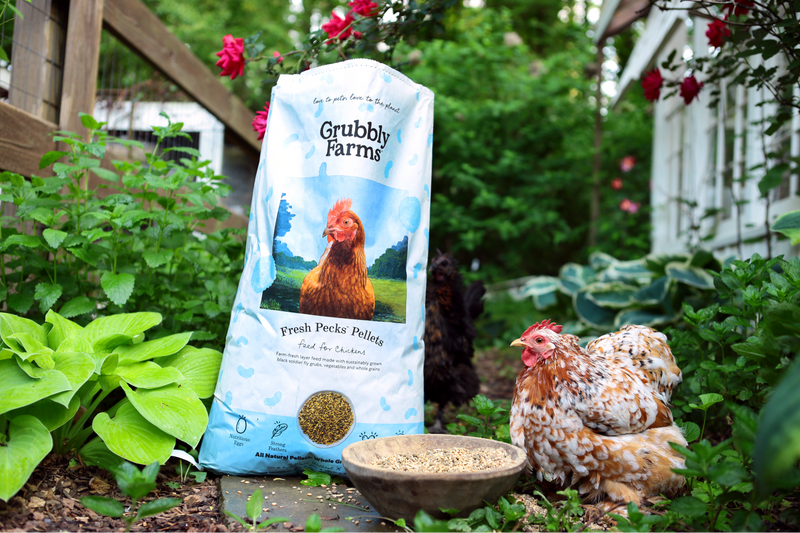If you own chickens, you know how much they love to eat insects. They come running with excitement at snack time! Not only can an insect snack provide essential nutrients to supplement their diet, it can also help you train your flock to get them back into the coop safely after free ranging.
Mealworms and black soldier fly grubs are the most common insects to feed your flock. Since these are two different insects, they have different levels of nutrients. So which insect is a better choice for your flock?
What Are They?
Let’s start by distinguishing the physical differences between mealworms and black soldier fly grubs.
Black soldier fly grubs are the larvae of the black soldier fly. The black soldier fly is a harmless, non-invasive fly species native to the Western Hemisphere and Australia. These insects do not bite or sting, nor are they considered garden or crop pests.
They do not transmit diseases like the common house fly. Instead, they work to sanitize food! Black soldier fly larvae contain anti-microbial properties that help break down bacteria in the food that they consume during their larvae growth stage!
Like most insects, the black soldier fly goes through a complete metamorphosis stage, including the egg, larvae, pupa, and adult phase. Their life cycle lasts about 45 days in the wild. When grown for commercial purposes, the hatch-to-harvest period can be as short as 15 days. The short hatch-to-harvest period makes black soldier fly grubs an extremely economical insect to raise.
The grubs are dried at the larvae stage of the black soldier fly’s life cycle. During this stage, the larvae are grub-like creatures that have voracious appetite. Black soldier fly larvae are considered the piranhas of the insect world, capable of eating a wide variety of waste streams and can eat twice their body weight per day.
The grubs will eat just about anything, including food waste, decaying organic matter, and manure. They are the world’s tiniest powerhouse recyclers! Depending on where the grubs are farmed, the food that the grubs eat will vary. Their ability to quickly consume large amounts of food waste and then use that energy to grow while creating relatively minimal waste themselves is what makes these grubs so fascinating. Black solider fly grubs can also be called black soldier fly larvae, or BSFL. For in-depth information on the black soldier fly and farming practices, check out our new BSF guide.
Mealworms are the larvae of the darkling beetle. The darkling beetle is considered a garden and crop pest that consumes young seedling and plant leaves. These insects also go through a complete metamorphosis of egg, larvae, pupa, and adult. The darkling beetle life cycle can last for as long as a year in the wild. When grown for commercial purposes however, the hatch-to-harvest time span is roughly 40 to 50 days. The mealworms that are dried for bird food are at the larvae stage of the darkling beetle life cycle. Like black soldier fly grubs, mealworms also have a large appetite and will readily consume a wide range of organic material including grains, vegetation, other dead insects, manure, and decaying matter.

Black Soldier Fly Nutrition vs Mealworm Nutrition
Despite the fact that black soldier fly larvae and mealworms have similar eating habits during their larvae stages, their nutritional content is different. Dried mealworms and dried black soldier fly grubs have differing amounts of important poultry dietary elements such as protein, fat, fiber, and calcium.
Black soldier fly grubs contain roughly 40% protein, 28% fat, 10% fiber, and 3% calcium. The nutritional profile varies depending on what the grubs consume. The protein in black soldier fly grubs can help chickens during the molt, which is when a chicken loses all its feathers and re-grows new feathers. During this time, protein needs increase because feathers are about 90% protein.
Protein is also needed on a regular basis for maintaining various body systems and keeping a chicken healthy. Black soldier fly grubs can be a helpful supplement during times of stress or weather changes when protein needs may also increase for the flock.
The fat content of black soldier fly grubs provides essential energy and can actually increase the amount of nutrition that is absorbed from feed ingredients that are present at the same time of digestion. The fiber content of black soldier grubs is beneficial for keeping a healthy digestive system.
Mealworms contain about 50% protein, 25% fat, 7% fiber, and very little calcium. The protein, fat, and fiber content of mealworms can all provide similar benefits to those of black soldier fly grubs. However, it’s important to note the ratio of these dietary elements in each of these insects. Just because mealworms contain more protein, doesn’t make them a healthier snack option for your flock. Too much protein can cause other health issues such as gout or an imbalance in the diet. All the dietary elements of the snack must be considered first before coming to a conclusion on the healthier insect snack.
It’s also important to realize that the nutritional value of both mealworms and black soldier fly grubs is dependent on their diet as well as when they are harvested. Both insects will start to build up fat reserves closer to the time they metamorphosize from larvae to pupa. The later the larvae are harvested and dried, the more fat they will contain. The protein and fat content of the insects is also directly related to what foods they are consuming at the larvae stage. Every farm has different standards to growing insects and the types of foods the insects consume.
BSFL Calcium Content vs Mealworm Calcium Content
One of the biggest advantages that black soldier fly grubs has over mealworms is calcium. As you may have noticed in the above nutritional evaluation, black soldier fly grubs contain an essential amount of calcium, whereas mealworms contain hardly any at all.
Calcium is an important dietary element in a laying hen’s diet. Not only does it allow hens to properly create and form eggshells, but calcium also plays a vital role in maintaining overall health. However, calcium is interrelated with phosphorus. The two must be present at the same time in order for each other to be used by the hen’s body.
This is where black soldier fly grubs really shine. Black soldier fly grubs have an optimal calcium to phosphorus ratio. They contain just the right amount of each nutrient so that when the grubs are consumed, the calcium they contain can be used by the hen’s body. Mealworms on the other hand contain plenty of phosphorus but are lacking in calcium. Thus, they are not a balanced source of both calcium and phosphorus.
Black soldier fly grubs contain about 50x more calcium than mealworms, and all of that calcium is immediately usable thanks to the presence of phosphorus! Chickens consume more calcium with a small handful of grubs than they would with a 5 lb bag of mealworms.
BSFL Farms vs Mealworm Farms
Another factor that should be considered when deciding between black soldier fly grubs and mealworms is from where each insect is sourced or farmed. The nutritional value of both insects is influenced by what they eat, which in turn is controlled by the facilities growing the insects.
Black soldier fly grubs are commonly grown in the United States and Canada, being that the black soldier fly is mostly a Western Hemisphere insect. There are also state-of-the-art farms around the world that grow grubs according to various standards. You can learn how to judge a grub by various standards here.
Mealworms on the other hand are usually sourced outside of the Western Hemisphere. In fact, over 90% of the mealworms sold in the United States have been imported. To be imported to other countries, the mealworms are regulated as wild bird food and thus don’t have to meet the strict requirements that livestock feed ingredients must adhere too. Because mealworms are imported as wild bird food, you may hear that mealworms are illegal to feed to poultry. This is because they cannot legally be considered edible by production livestock (like laying hens).
BSFL Sustainability vs Mealworm Sustainability
Black soldier fly grubs are a highly sustainable and healthy food for your flock to enjoy. In fact, protein-packed grubs are as healthy for pets as they are healthy for the planet. with a voracious appetite, grubs can be fed food waste that would otherwise end up in a landfill. The grubs are experts at converting high volumes of organic waste into smaller biomass while at the same time growing fat and plump themselves.
Instead of incorporating grub protein, most chicken feeds use traditional protein like soy and fishmeal, ingredients that are harmful to the planet. Forage fish are vital to healthy oceans, yet they’re churned into fishmeal as a key source of protein in chicken feed. In fact, nearly 10% of the ocean’s catch is ground up into fishmeal to feed our pets and livestock, causing devastating effects further up the food chain.
Grubbly Fresh Pecks is a soy-free, fish-free layer feed that uses all-natural grub protein to nourish chickens, the way nature intended. Every bag of Grubbly Fresh Pecks helps to recycle 35 pounds of food waste and protect pounds of fish from our overfished oceans.
Another factor that makes the grubs a sustainable option is the fact that they can often be sourced from North America, which reduces the carbon footprint required to make and sell them.
While mealworms can also convert organic matter into smaller waste particles, they are not as sustainable in other aspects of how they are raised. The facilities in which imported mealworms are grown are typically not tightly regulated, so it’s difficult to know if the waste they are being fed is helping reduce overall food waste. Mealworms are also usually imported, which means a larger carbon footprint.
When comparing the two insects, black soldier fly grubs require less space, less water, and less carbon in order for them to grow than mealworms. Black soldier fly grubs can produce twice the amount of protein per square foot of space than mealworms.

Black Soldier Fly Grubs or Mealworms?
When you feed your flock a daily snack, you want it to be healthy and beneficial for them! Black soldier fly grubs are a high-protein snack that also provide usable calcium to keep your flock healthy. Plus, grubs are approved for feeding to poultry. Every time you nourish your flock with sustainably-grown grubs, you’re showing love to our planet too.
Grubblies are oven-dried black soldier fly grubs, a healthier snack that chickens love. When you switch from mealworms to Grubblies, you’ll give your flock a boost of essential nutrients for stronger feathers and stronger eggshells. They’ll come running, jumping and flying!





